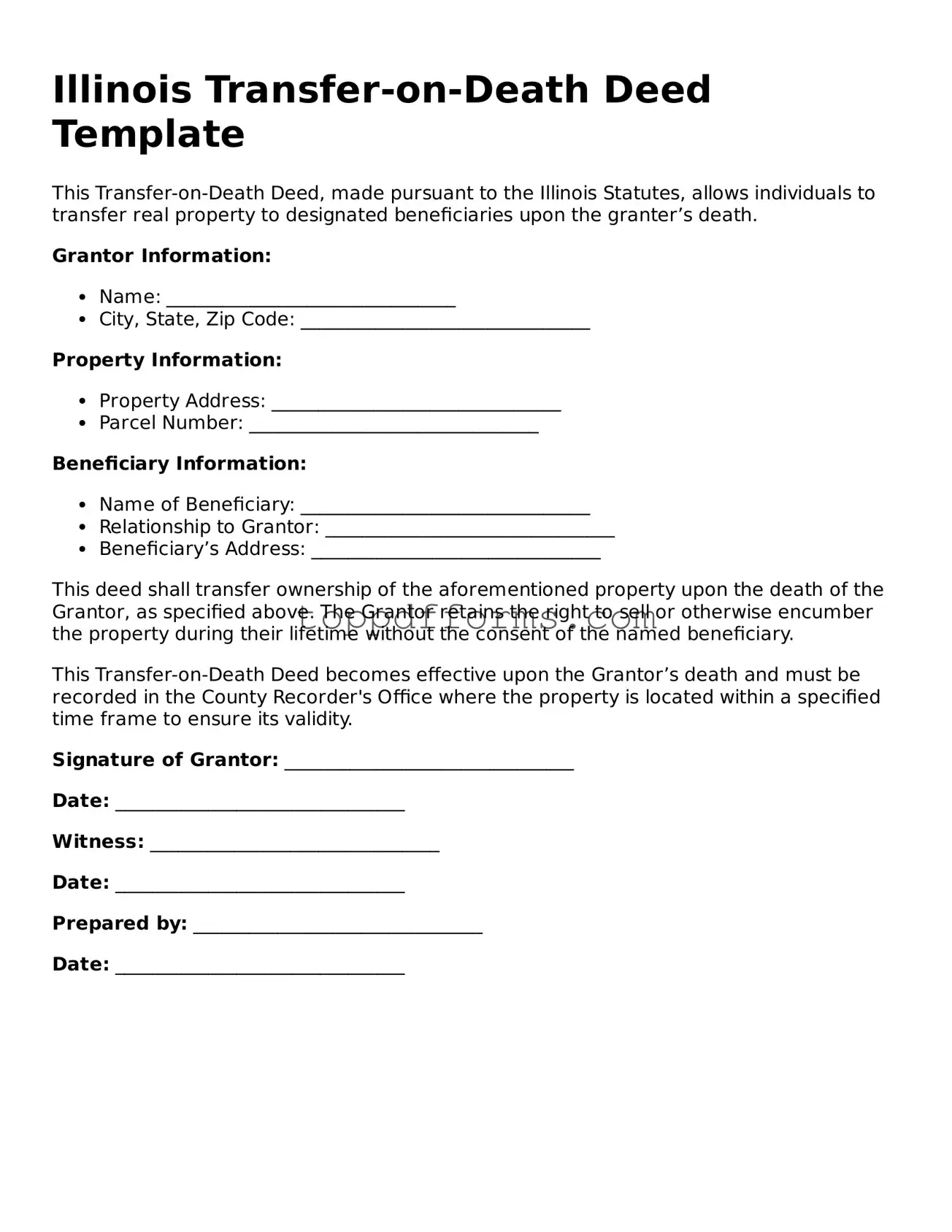What is a Transfer-on-Death Deed in Illinois?
A Transfer-on-Death Deed (TOD Deed) is a legal document that allows a property owner to transfer their real estate to a designated beneficiary upon their death. This deed helps avoid probate, making the transfer process simpler and faster for heirs. The owner retains full control over the property during their lifetime, including the right to sell or mortgage it.
How do I create a Transfer-on-Death Deed?
To create a TOD Deed in Illinois, you must complete a specific form that includes your name, the beneficiary's name, and a legal description of the property. It must be signed in the presence of a notary public and then recorded with the county recorder's office where the property is located. Ensuring the deed is properly executed and recorded is crucial for it to be valid.
Can I change the beneficiary after I have created a Transfer-on-Death Deed?
Yes, you can change the beneficiary at any time before your death. To do this, you will need to revoke the existing TOD Deed and create a new one with the updated beneficiary information. The revocation must also be recorded with the county recorder’s office to ensure that it is legally effective.
What happens if the beneficiary predeceases me?
If the beneficiary named in the TOD Deed passes away before you do, the deed typically becomes void unless you have named an alternate beneficiary. It is wise to consider naming a backup beneficiary to ensure that the property can still be transferred according to your wishes.
Are there any tax implications with a Transfer-on-Death Deed?
Generally, the property transferred through a TOD Deed is not subject to estate taxes at the time of transfer. However, the beneficiary may be responsible for property taxes and other liabilities after the transfer occurs. It is advisable to consult a tax professional for specific guidance based on individual circumstances.
Can a Transfer-on-Death Deed be used for all types of property?
In Illinois, a TOD Deed can be used for residential real estate, including single-family homes and condominiums. However, it cannot be used for commercial properties, personal property, or any other types of assets. Understanding the limitations of the TOD Deed is essential for effective estate planning.
What if I want to sell the property before I die?
You can sell or mortgage the property at any time while you are alive, even if you have executed a TOD Deed. The deed does not limit your rights as the property owner. Once the property is sold, the TOD Deed is no longer effective, and the beneficiary will not receive the property.
Is legal assistance necessary to create a Transfer-on-Death Deed?
While it is possible to create a TOD Deed without legal assistance, consulting an attorney is recommended. An attorney can ensure that the deed complies with state laws and accurately reflects your intentions. They can also help you understand the implications of the deed and assist with any necessary changes in the future.
How can I obtain the Transfer-on-Death Deed form?
The Transfer-on-Death Deed form can be obtained online from various legal websites or directly from the Illinois Secretary of State’s website. Additionally, county recorder’s offices may provide the form. It is important to use the most current version of the form to ensure compliance with Illinois law.
